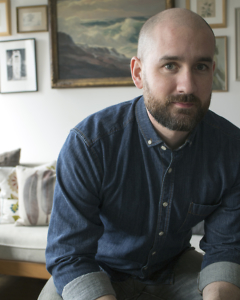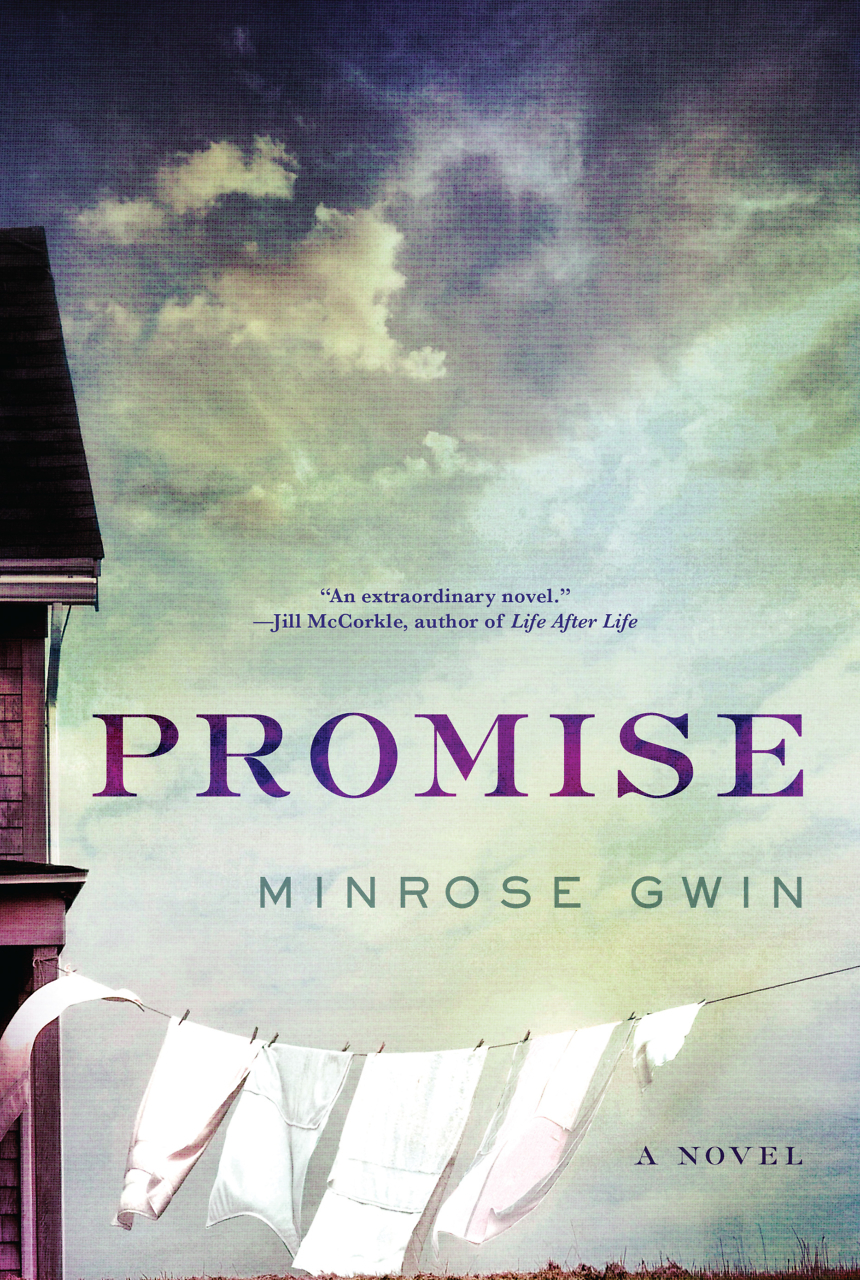Roz’s Return
Peter Brown reunites young readers with a beloved character in The Wild Robot Escapes
For fans of Peter Brown’s acclaimed middle-grade novel, The Wild Robot, it’s been two long years of waiting and wondering about the fate of Roz, the book’s beloved title robot. Stranded on a secluded island, Roz makes a home and even raises a gosling as her own son. At the close of The Wild Robot, she and her devoted wildlife friends bravely fight and destroy robots sent to capture and reprogram her. Roz is left with severe damage, and readers are left craving a sequel.
 Now Roz is back in The Wild Robot Escapes. Deftly summarizing the story of the first book to refresh readers’ memories (“You might remember her old life on a remote, wild island”), Brown ushers readers into the details of Roz’s new life. No longer on the island, she has been refurbished and is ordered to do farm work for Mr. Shareef, a widower with two children and an old dairy farm. In the family for generations, the farm is now ultra-mechanized but also run-down. Rox is in good hands here, but she desperately wants to get back to her wild island home and see her beloved son, Brightbill, again.
Now Roz is back in The Wild Robot Escapes. Deftly summarizing the story of the first book to refresh readers’ memories (“You might remember her old life on a remote, wild island”), Brown ushers readers into the details of Roz’s new life. No longer on the island, she has been refurbished and is ordered to do farm work for Mr. Shareef, a widower with two children and an old dairy farm. In the family for generations, the farm is now ultra-mechanized but also run-down. Rox is in good hands here, but she desperately wants to get back to her wild island home and see her beloved son, Brightbill, again.
Brown spends abundant time with Roz on the farm, revisiting her contradictory, and beguiling, nature. An electronic signal alerts Mr. Shareef any time Roz leaves the premises, but she still quietly plans her escape. After a devastating tornado disables the computer systems on the farm, kindhearted Roz has an opportunity to leave yet feels an urge to stay and protect the family she has grown to love. She’s not programmed for violence yet boldly wields a rifle to scare off wolves who endanger her animal friends. These push-and-pull tendencies, quite human in nature, are a large part of what makes her such an endearing character. What a conundrum is Roz, and how we love her for it.
Aiding these feelings of endearment is Brown’s writing style. Using short, direct sentences (he’s not one to engage in flowery figurative language), short chapters, and a measured pace, he invites readers into Roz’s thoughts. He also returns to the chummy voice of the first book, affectionately addressing readers directly and bringing them into the fold by describing Roz as “our robot.” Roz’s paradoxical self is for all of us. We’re in this together.
 As in the first book, Brown subtly asks readers to consider the effects of mechanization on our world. Roz’s tale is set in an indeterminate future—in this sequel, there are self-driving trucks and a Space Station where animals and “space farmers” live. But we get the sense that Mr. Shareef would find more happiness if he relied less on computers and more on the pleasures of farm work by his own hands. When Roz finds an old scrapbook detailing life on the farm as it used to be generations earlier, it’s a reminder to the Shareef family, as well as readers, that a technology-free life—or at least one not so highly mechanized-has copious benefits. Brown doesn’t delve deeply into this idea, but he hints at it, leaving it on the table for readers to ponder.
As in the first book, Brown subtly asks readers to consider the effects of mechanization on our world. Roz’s tale is set in an indeterminate future—in this sequel, there are self-driving trucks and a Space Station where animals and “space farmers” live. But we get the sense that Mr. Shareef would find more happiness if he relied less on computers and more on the pleasures of farm work by his own hands. When Roz finds an old scrapbook detailing life on the farm as it used to be generations earlier, it’s a reminder to the Shareef family, as well as readers, that a technology-free life—or at least one not so highly mechanized-has copious benefits. Brown doesn’t delve deeply into this idea, but he hints at it, leaving it on the table for readers to ponder.
After a happy reunion with her son, Roz enlists the Shareef children’s help in getting back to the island she once called home. They agree, Brown writes, because “[i]n addition to being sneaky and clever, they’re also compassionate. Children care deeply about others, and about the world.”
After a tender goodbye to the farm animals and the children, Roz and Brightbill head out. The book’s second half is the wild robot’s attempt to find her way back home. The adventure eventually puts her face-to-face with someone intensely interested in Roz’s unique and evolving nature. This character’s interaction with Roz gets at the book’s central, thought-provoking question: how do you know when your feelings are real? Even robots—at least unforgettable and fully-realized ones like Roz—can give us insight. “Maybe I am defective,” she says, and “maybe everything I have experienced is the result of a glitch. But if so, what a beautiful glitch!”
Offering a much tidier ending than the prequel’s wide-open one, Brown still leaves wiggle room for a follow-up book. But even if that doesn’t happen, readers will be satisfied with the opportunity to have spent this time with “our robot” again, glitches and all.

Julie Danielson, a former school librarian, blogs at Seven Impossible Things Before Breakfast and writes about picture books for Kirkus Reviews, BookPage, and the Horn Book. Her first book, Wild Things! Acts of Mischief in Children’s Literature, was published in 2014.


